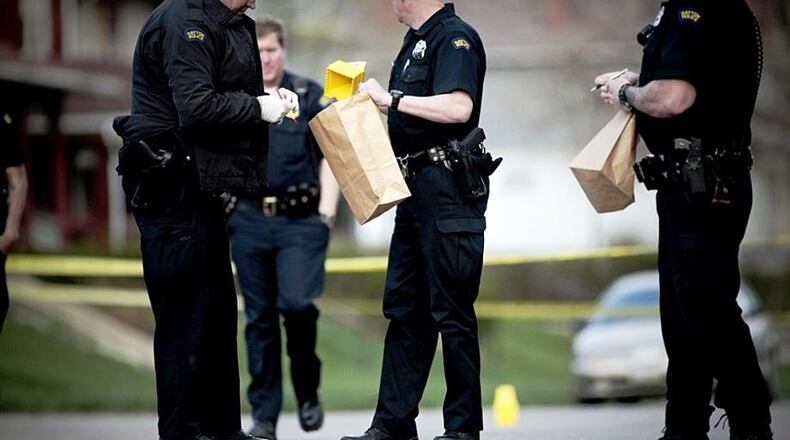ShotSpotter’s audio sensors captured about 40 or more incidents of gunfire in the North Main Street area shortly after the system was activated, but only one or two were ever reported to authorities, Dayton police Chief Richard Biehl said earlier this month.
“Clearly the technology is revealing that there is a significant under-reporting of these kinds of events,” he said.
Reducing gun crime is one of the police department’s top priorities, officials say, and ShotSpotter helps police identify gun crime victims and suspects and recover forensic evidence that can help solve crimes.
MORE: Dayton may use tech that listens for gunshots, pinpoints location
Over the summer, the Dayton City Commission approved a $205,000 contract with California-based ShotSpotter to install acoustic sensors in an area near North Main Street and Salem Avenue.
The sensors listen for gunshot sounds. When loud booms, bangs and pops are detected, ShotSpotter staff monitoring the system review the noises to verify that they are actual gunfire. If confirmed, ShotSpotter can identify the location of gunfire in the “surveillance area” and alert police via texts and other messages.
Dayton’s system covers a three-mile area in the North Main Street corridor. The location was selected because of the high number of gunshot-related calls.
“Our hope is that this technology will help reduce gun violence and gun crime by allowing our officers to respond not only faster, but also more accurately, to the location where a weapon was used,” police Lt. Col. Eric Henderson said.
MORE: Dayton police test ShotSpotter gunshot-detection system — after a heads-up
The system was tested in early December and went live on Dec. 11. Without the technology, police never would have learned about dozens of incidents.
In one case, about a dozen shots were fired, and yet not one person called 911, Biehl said.
Dayton police responding to a ShotSpotter alert discovered a gunshot victim, Biehl said. Another time, officers encountered an armed suspect after responding to an alert.
On Dec. 20, police responded to a ShotSpotter call near Mary Avenue in the Santa Clara neighborhood.
Officers arrested a 34-year-old suspect on felony charges including carrying a concealed weapon and improper handling of a firearm in a motor vehicle, according to a police report and municipal court records.
But police reports show that officers responding to ShotSpotter alerts regularly do not find any shell casings or evidence of a shooting.
Officers often talk to residents or leave notes on their doors to try to find out if they heard the gunfire and knew where it occurred.
Citizens who report gunfire often have no idea where it occurred. ShotSpotter, whis is used in about 100 cities, promises to detect and accurately locate the vast majority of about 90 percent of outdoor gunshots within about 82 feet of the actual firing location, according to city documents.
“It is estimated that 80% to 90% of the time a gun is fired, there’s no call to 911,” said ShotSpotter CEO Ralph Clark. “As a result, there is no response.”
MORE: $3.8M goes to 47 mass shooting victims, reflects Dayton Strong unity
About the Author

